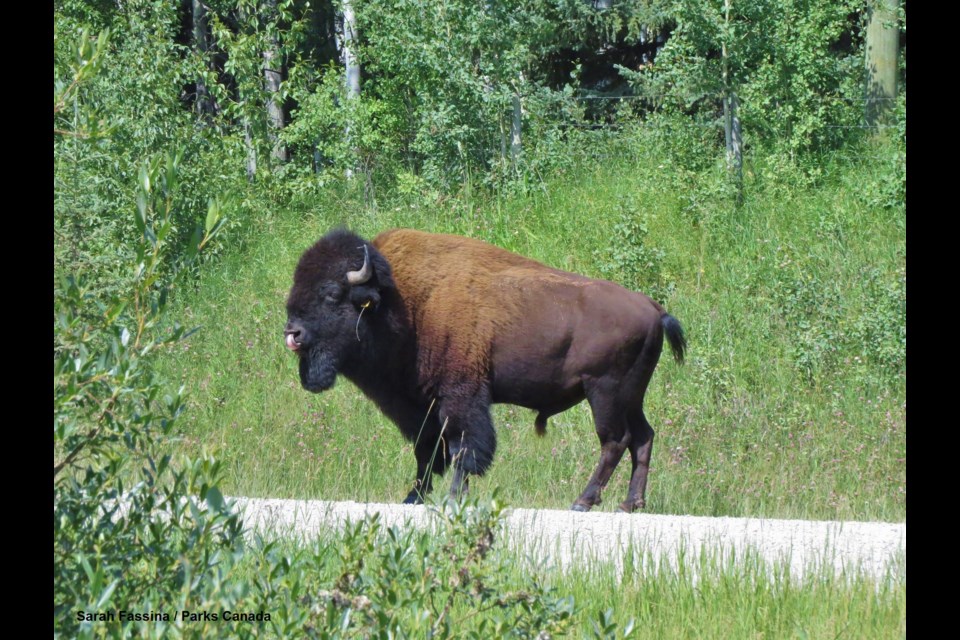BANFF – Another bison has bolted from Banff National Park making it the third bull to leave the reintroduced herd in the past year.
According to Parks Canada, the federal agency received a report of the plains bison in a remote region outside Banff National Park and outside the Provincial Upper Red Deer Special Bison Area on Aug. 1.
Over the course of the next two days, Parks Canada resource conservation staff used aerial searches, ground patrols and remote cameras to look for the animal, but were unable to find it.
After another report from a member of the public and an extensive search, Parks Canada said in a statement it located the animal approximately 15 kilometres northwest of Sundre on Aug. 4.
"Given the proximity of this bison to agricultural areas and the continued eastward movement towards surrounding communities, Parks Canada made the decision to immobilize and relocate the bison to Rocky Mountain House National Historic Site," wrote Justin Brisbane, a public relations and communications officer for Parks Canada.
"This is consistent with commitments made to the Province of Alberta and stakeholders, that Parks Canada would take quick action if bison were to move beyond accepted areas."
It is the third bison bull to wander onto provincial land from the reintroduced herd since Parks Canada released 31 wild plains bison into a 1,200 square reintroduction zone in Banff National Park's backcountry last summer.
According to Parks Canada, the reintroduction zone is not completely fenced, allowing bison to roam freely into other parts of the national park and occasionally onto provincial lands.
Parks Canada said the relocated bison is safe and healthy, however, it will no longer be part of the reintroduction project and will not be returned to Banff National Park. Instead, the bison will join the small herd of plains bison that Parks Canada manages at Rocky Mountain House National Historic Site.
Last August, Parks Canada had to kill a bison bull after it continued to move eastward towards private grazing ground while the other was relocated to Rocky Mountain House National Historic Site.
The $6.4 million project is part of Parks Canada's efforts to explore the long-term feasibility of restoring North America’s largest land mammal to Canada’s first national park. The species is considered extirpated in Alberta and the herd is only one of three roaming free in North America.
In February 2017, 10 pregnant cows and six bulls were brought to the Panther Valley from a disease-free herd at Elk Island National Park. Three of the original bulls remain within the reintroduction zone.
"We had 10 calves born in the 2018 calving season and unfortunately we can't be sure of their genders because we didn't handle them then, but likely some of those are male," said Saundi Norris, acting lead for the bison project.
She said at least two male bison calves have been born over the past three calving seasons and it's likely the herd contains several more. The total herd now includes 35 animals.
The pilot project is expected to continue until 2022 and discussions are currently underway to fund the project into the future.





